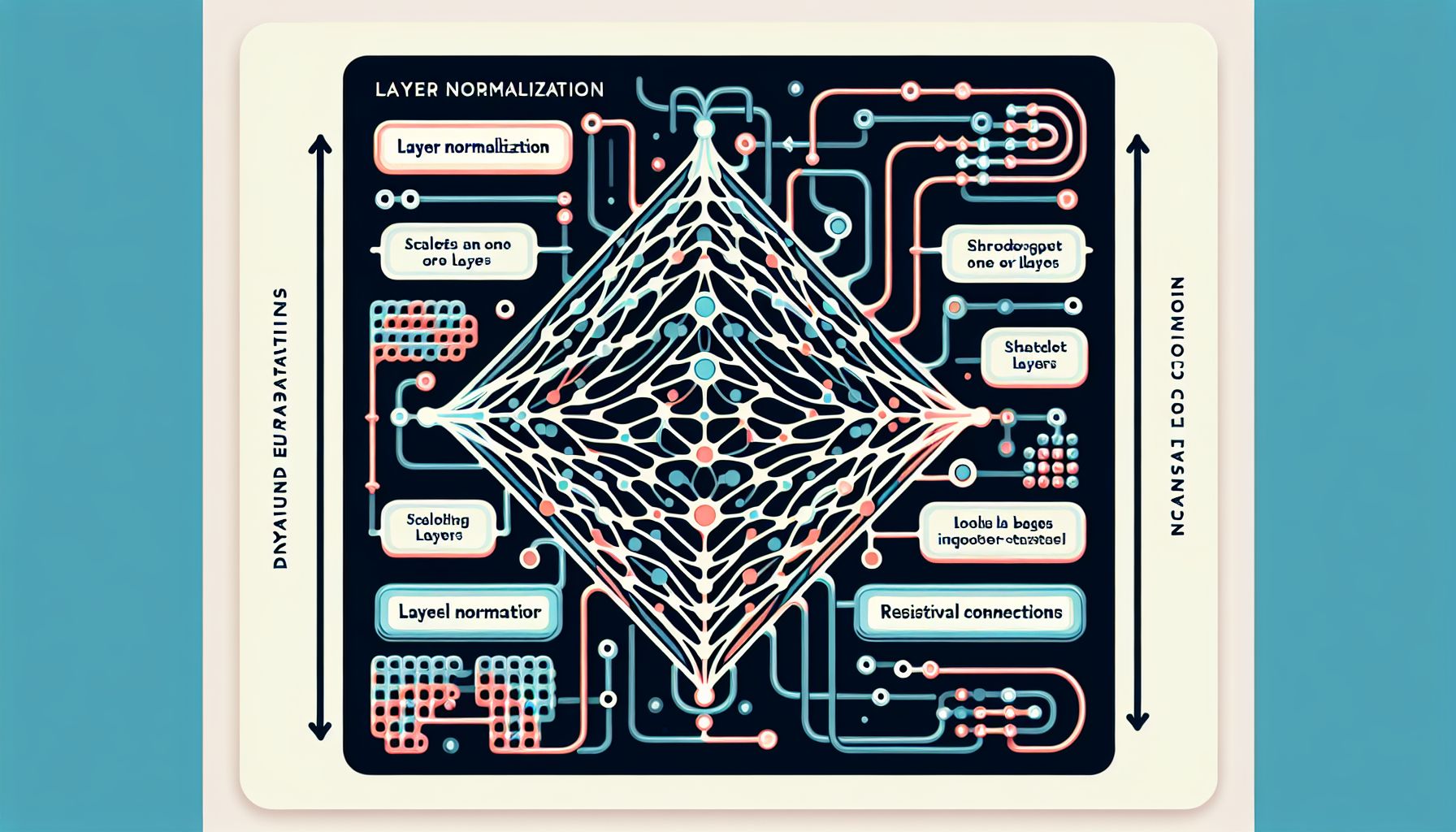📌 Let’s explore the topic in depth and see what insights we can uncover.
⚡ “Unlock the power of your neural networks by mastering two heavyweight tools: Layer Normalization and Residual Connections. These may sound intimidating, but here’s a secret - they’re simpler than you think!”
Welcome, fellow data enthusiasts! Today, we’re diving deep into the world of deep learning. If you’re familiar with neural networks, you know how complex and intertwined their layers can get. It’s like a high-tech version of the children’s game “Telephone,” except the messages passed around are numerical weights and biases, not whispered phrases. And just like in Telephone, things can get a bit distorted along the way. 🔍 Interestingly, where layer normalization and residual connections come into play. They’re the referees of the neural network game, keeping things in check and ensuring the right information gets to where it needs to go. Let’s turn on the spotlight and explore these two fascinating concepts in detail.
💡 Layer Normalization: The Equalizer

"Unraveling the Intricacies of Layer Normalization & Residual Connections"
What is Layer Normalization?
In the realm of deep learning, layer normalization is like the peacekeeper. It ensures all the neurons or units in a network layer get equal attention and consideration. But how does layer normalization do this? Imagine a music band where everyone plays at their own speed and volume, with no regard for each other. The result would be a cacophonic mess, right? 🔍 Interestingly, what happens in a neural network without normalization. The units, like unruly band members, start producing outputs of varying scales, making it difficult for the network to learn effectively. Layer normalization, like a strict bandleader, normalizes the activations of the current layer at each training step, independently of the batch size. It computes the mean and variance used for normalization from all of the summed inputs to the neurons in the layer on a single training case. This way, it brings balance and harmony to our neural network band, leading to more stable and efficient learning.
import tensorflow as tf
layer = tf.keras.layers.LayerNormalization()
Why Use Layer Normalization?
Not convinced yet? Here are some of the benefits of using layer normalization in your neural networks:
Consistent Training Speeds
Layer normalization doesn’t depend on the batch size, so you can train your models at consistent speeds, even with different batch sizes.
Stable Gradients
By normalizing the activations, layer normalization stabilizes the gradients, making the training process less susceptible to the infamous exploding/vanishing gradients problem.
Better Generalization
Layer normalization can improve the generalization of your models, helping them perform better on unseen data.
🔄 Residual Connections: The Shortcut Creators
The Idea Behind Residual Connections
Have you ever found yourself lost in a maze and wished you could just jump over the walls to the exit? 🔍 Interestingly, essentially what residual connections or skip connections do in a neural network. As a signal travels through a deep neural network, it can get distorted or lost due to the depth of the network. Residual connections offer a solution to this problem by creating shortcuts or skip connections from one layer to another, allowing the signal to bypass one or more layers.
from keras.layers import Input, Conv2D, Add
from keras.models import Model
# input tensor for a 3-channel 256x256 image
x = Input(shape=(256, 256, 3))
# 3x3 conv with 3 output channels (same as input channels)
y = Conv2D(3, (3, 3), padding='same')(x)
# this returns x + y.
z = Add()([x, y])
# model = Model(x, z)
Why are Residual Connections Important?
Residual connections are a game-changer in deep learning because they:
Solve the Vanishing/Exploding Gradients Problem
By creating shortcuts in the network, residual connections reduce the path that gradients have to travel during backpropagation, mitigating the risk of them becoming too small (vanishing) or too large (exploding).
Enable Training of Deeper Networks
With residual connections, it’s possible to train much deeper networks without suffering from performance degradation. Bigger can indeed be better!
Improve Model Performance
Studies have shown that models with residual connections often perform better on tasks like image and speech recognition compared to traditional models.
🤓 Deep Dive: Layer Normalization vs Batch Normalization
Now, you might be wondering about batch normalization, another popular normalization method in deep learning. Well, you’re not alone. Layer normalization and batch normalization often get compared, so let’s clear up the confusion.
While they’re both normalization techniques, they differ in two key ways:
Computation
Batch normalization computes the mean and variance for each feature over a batch of data, while layer normalization does so over the features of a single data point.
Usage
Batch normalization is often used in convolutional networks (CNNs), where spatial information matters, while layer normalization is preferred in recurrent networks (RNNs), where the independence of instances is important.
🧭 Conclusion
And there you have it – a whirlwind tour of layer normalization and residual connections! These techniques, while might seem complex at first, are key players in the deep learning field. They ensure our neural network models are not just deep, but also efficient, stable, and accurate. Layer normalization is the harmonizer, ensuring all units within a layer contribute equally to the network’s output. On the other hand, residual connections are the smart strategists, creating shortcuts for signals to travel faster and smoother in the network. Remember, deep learning is not just about stacking layers upon layers in a network. It’s about making those layers work together in the most effective and efficient way. And with tools like layer normalization and residual connections, we’re well on our way to achieving that. So, let’s continue dancing with the layers, and keep pushing the boundaries of what’s possible in deep learning! 💃🕺
🤖 Stay tuned as we decode the future of innovation!
